Young Lords celebrate 55 years of Puerto Rican resilience
By Cary Robbins La DePaulia News EditorThe Lincoln Park neighborhood looks far different than it did in 1970 when Hila Frontany bought her house on Diversey and Sheffield.
The once Puerto Rican neighborhood has evolved to become one of the richest neighborhoods in Chicago.
She was one of many Puerto Ricans forced to leave Lincoln Park due to gentrification propelled by former mayor Richard J. Daley’s urban renewal project, according to the Black Metropolis Research Consortium.
“The taxes went higher and then some of the businesses and places where the young children could participate began to disappear,” Frontany said.
These neighborhood changes inspired Frontany to be a part of the Young Lords, a Puerto Rican organization that began in the 1960s after an influx of Puerto Ricans came to Chicago and started living in the Lincoln Park, Humboldt Park and Wicker Park neighborhoods.
After the urban renewal project caused the Puerto Rican community to be displaced, the Young Lords started to fight for free breakfast programs, legal aid for children and many other survival programs modeled after the Black Panther Party.
Original and new members of the Young Lords organization gathered to celebrate 55 years of the organization in DePaul’s Cortelyou Commons building on Monday, Sept. 18.
There, Frontany and older members, including José “Cha Cha” Jiménez, founder of the
Young Lords, applauded the New Era Young Lords and told their stories to young activists, in an effort to keep the mission alive.
At the ceremony, the group honored Jiménez by giving him a lifetime achievement award for fighting for civil rights and social justice among communities of color.
DePaul will acknowledge other Young Lord accomplishments in May 2024, when they will unveil a plaque that is the first history marker in the city of Chicago to celebrate the impact the Young Lords have had on the city.
Jacqueline Lazú, who is a faculty member at the Department of Modern Languages and co-
chair of the Young Lords historical marker committee, started working at DePaul’s Center for Latino Research about 20 years ago and began her decades-long research documenting the history of the Young Lords and DePaul’s role in displacing the Puerto Rican community.
Lazú and other community members have helped to create the plaque honoring the group. It will be placed outside of DePaul’s School of Music building, which used to be the McCormik Theological Seminary, a neighborhood resource for Puertoricans, before it moved to Hyde Park in 1975, Lazú said.

The co-founder of the Young
Inside the lives of employed college students
By Eli SmithContributing Writer
Ana Israelson, a 19-year-old DePaul junior, works off-campus while taking classes to afford rent and groceries. If she had the choice, she would focus exclusively on her life as a student.
“I’m jealous of people who are not that worried about [working],” Israelson said. “I feel like my academic life would be a lot better if I didn’t have to work while being here.”
The National Center for Education Statistics reports that 40% of full-time undergraduate students are employed while taking classes, but not all of them work off-campus jobs that can conflict with class schedules.
Lords chapter in New York, Juan González, also came to speak about starting his own group in 1969 and how the organization became a national movement.
The former minister of information for the Young Lords organization, Omar López, reflected on how the group turned into a “human rights organization.” He asked the New Era Young Lords to stand, as he acknowledged their continued efforts to fight.
“The Puerto Rican community may not be in this neighbor
See YOUNG LORDS,
continued on page 5
Many students like Israelson said they work to afford housing and groceries but also to help them pay tuition which skyrocketed in recent decades.
As DePaul has raised tuition costs in recent years, students are experiencing this issue firsthand.
Israelson works roughly 30 hours per week as a food runner and cashier at a pizza restaurant. She said her ability to balance work and school can be a struggle
See JOBS, continued on page 4
Pillow Talk creates safe space for sex education conversations
By Molly Tinkey Contributing WriterThe last thing Pillow Talk hosts Maya Roman and Madison Webb want is for college students to relive the “birds and the bees” talk from home or the classroom.
Pillow Talk seminars help people get to know their bodies and not be ashamed of “all the weird noises and smells and everything that comes with it because it is perfectly natural,” Roman said at the most recent seminar, Sept. 27th.
Roman, a DePaul junior, said it is also the group’s goal to teach methods for safe sex to help students “know what’s healthy.”
“We want to create a place where the taboo becomes the norm,” sophomore Webb said.
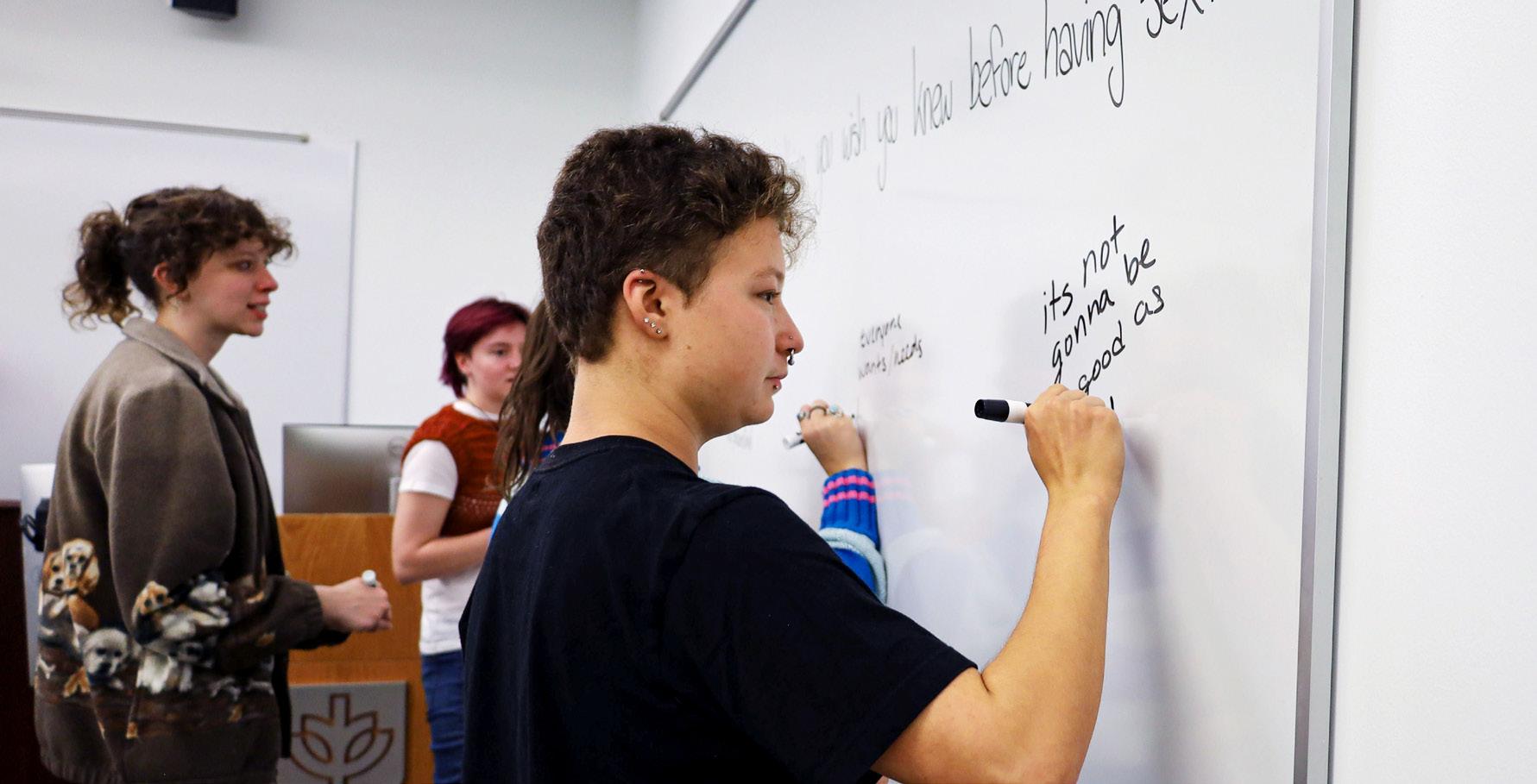
Roman and Webb began their journey as sex educators when they created the Pillow Talk seminars at DePaul last year. The program is
a branch of Planned Parenthood Generation Action at DePaul.
The Wednesday seminar was the first of fall quarter and covered anatomy, misconceptions about sex, grooming and hygiene, body
image and sexually transmitted infections. Attendants filled the seats of room 309 in the Arts and Letters building on the Lincoln Park Campus.
The Pillow Talk seminars will
be hosted once a month in the same location. Past topics included mental and emotional sex ed, porn literacy, and domestic violence in the media.
“This is something insanely
important that needs to be accessible to all students,” said junior Kailey Gielink, an attendee. “I’m here to get the information I wasn’t taught in high school and to be a better ally and advocate.”
If — a big if — students received sex education at school, Roman said they usually start with anatomy diagrams “and then that’s what people go with for the rest of their lives.” Roman wants Pillow Talks’ sex ed discussion to start with the basics before building into more complex ideas.
Roman said most people she encounters do not believe their sex education was adequate in “any way, shape, or form,” whether it was from PE teachers, or those who were taught abstinence education. Some people who come to Pillow Talk had no formal sex education
The DePaulia is the official student-run newspaper of DePaul University and may not necessarily reflect the views of college administrators, faculty or staff.


EDITOR-IN-CHIEF | Nadia Carolina Hernandez eic@depauliaonline.com
ONLINE MANAGING | Samantha Moilanen online@depauliaonline.com
PRINT MANAGING | Lilly Keller managing@depauliaonline.com
NEWS EDITOR | Lucia Preziosi news@depauliaonline.com

ASST. NEWS EDITOR | Rose O’Keeffe news@depauliaonline.com
OPINIONS EDITOR | Carly Witt opinion@depauliaonline.com
FOCUS EDITOR | Una Cleary focus@depauliaonline.com
ARTS & LIFE EDITOR | Claire Tweedie artslife@depauliaonline.com
ASST. ARTS & LIFE EDITOR | Sam Mroz artslife@depauliaonline.com

SPORTS EDITOR | Ryan Hinske sports@depauliaonline.com
ART EDITOR | Maya Oclassen art@depauliaonline.com
DESIGN EDITORS | Jake Cox design@depauliaonline.com

MULTIMEDIA EDITOR | Quentin Blais multimedia@depauliaonline.com

ASST. MULTIMEDIA EDITOR | Jonah Weber multimedia@depauliaonline.com

PHOTO EDITOR | Kit Wiberg photo@depauliaonline.com
ASST. PHOTO EDITOR | Erin Henze photo@depauliaonline.com
COPY EDITOR | Amber Corkey copydesk@depauliaonline.com
SOCIAL MEDIA EDITOR | Vanessa Lopez social@depauliaonline.com



COMMUNITY ENGAGEMENT EDITOR | Ruchi Nawathe community@depauliaonline.com
ADVISER | Martha Irvine mirvine5@depaul.edu
CAMPUS CRIME REPORT
LINCOLN PARK CAMPUS
Sept. 27 to Oct. 3, 2023
LOOP CAMPUS
LINCOLN PARK CAMPUS
Drug & Alcohol Assault & Theft Other
Lincoln Park Campus Crimes:
Sept. 27
1) A Disturbance was reported on Kenmore involving two parties. One party followed the other into Arts & Letters. Chicago Police were called to the scene. No arrests were made.
2) Public Safety received information relating to a Motor Vehicle Theft that occurred on the 2300 block of Racine on Sept 24th. Not pictured above.
Sept. 28
3) A Theft was reported in Munroe Hall. Complainant reported their clothes missing from the laundry room.
4) A Theft report was filed regarding a scooter taken from the bike rack west of Schmitt Academic Center.
5) A Theft was reported outside the Fullerton El Station. Complainant was attempting to sell an item, and the offender fled with the item.
6) A Liquor Law Violation was reported outside of University Hall. Subject was transported to Illinois Masonic for treatment.
Sept. 29
8) A Theft report was filed regarding a bike taken from the rack on the north side of McCabe.
Oct. 1
9) An Attempted Theft was reported outside the Ray Meyer Fitness Center. Subject attempted to steal a bike from the bike rack.
10) Motor Vehicle Theft was reported on the 1100 block of W Fullerton. Not pictured above.
Oct. 2
11) Public Safety received a report of Criminal Sexual Abuse that occurred in LeCompte Hall on Sept 29th.
Oct. 3 12) Graffiti was reported on the 1150 W Fullerton building.
13) Public Safety received a report of Criminal Sexual Assault that occurred in Seton Hall on Sept 28th.
14) A Theft report was filed regarding the reported theft of a delivered package from the Student Center.
LOOP CAMPUS
SOURCE | DEPAUL CRIME PREVENTION OFFICE
No criminal incidents were reported during this time frame.
La DePaulia es el noticiero oficial estudiantil en español de la Universidad DePaul, enfocado en proveer una voz para la comunidad latinx. Nuestras opiniones no necesariamente reflejan las opiniones de la administración, facultad o personal de la universidad.


JEFA DE REDACCIÓN | Jacqueline Cardenas eicladepaulia@depauliaonline.com
GERENTE EDITORIAL | Rodolfo Zagal managingladepaulia@depauliaonline.com
EDITORA DE NOTICIAS | Cary Robbins crobbi10@depaul.edu
ASESORA | Laura Rodriguez Presa larodriguez@chicagotribune.com
7) A Battery report was filed regarding an offender who pushed several people in the lobby of 1150 W Fullerton as well as the public sidewalk on Fullerton. Chicago Police were called, and a Safety Alert was issued regarding the incident.
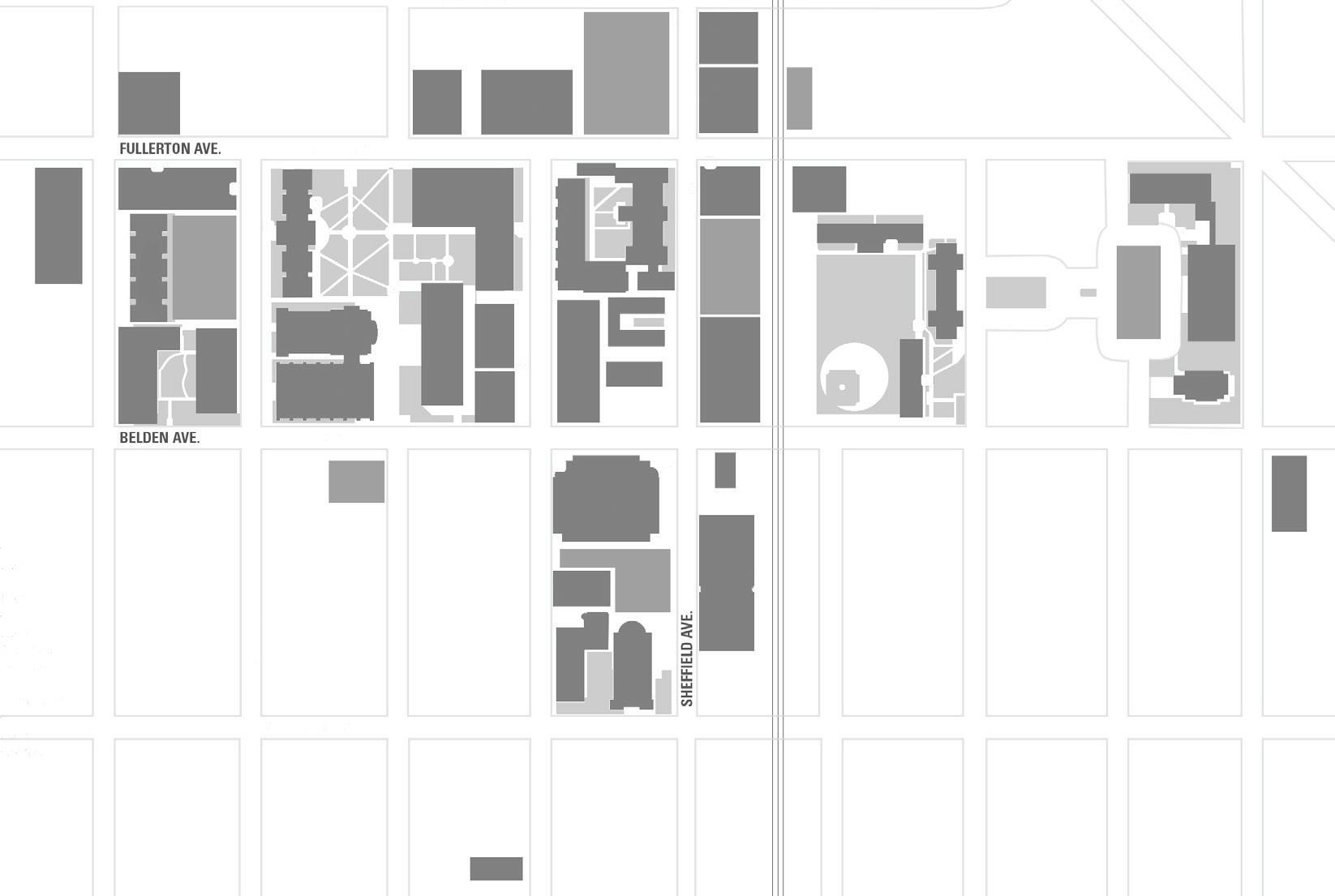
FOLLOW US:

 Loop Campus
Loop Campus
Venezuelan migrants are selling traditional food downtown
By Alyssa N. Salcedo Contributing WriterA migrant family has started selling foods from their home country in the streets of downtown Chicago as a way to make money to be able to rent an apartment while they wait for work permits.
Daniela, a migrant mother of two from Venezuela who did not wish to disclose her last name fearing repercussions, and her family, are selling arepas and other traditional dishes on one busy street corner.
She said her best selling dish is arepas, which are made from ground maize dough shaped into rounds and stuffed with meat and other fillings. But she also sells a variety of other dishes throughout the day.
Most of her clients, she said, are other migrants living in shelters that don’t have access to warm food or who crave the dish that reminds them of home.
“The pabellón is what I’m adding to the arepas. But typically, the pabellón dish consists of rice, black beans, shredded meat, fried plantains, and it includes eggs, cheese, and avocado.” she said in Spanish.
As she set up her food stand on a recent Thursday afternoon, she filled the streets with a spicy aroma and hungry crowds soon gathered around her to buy food from clear bins.
Three to four times a week, Daniela wakes up early to prepare the food and packages it to be sold downtown. Her husband helps her to transport the food from her temporary apartment where she does all her cooking.
A Venezuelan migrant who said his name was Kebin is a frequent client of the recent street vendors selling traditional Venezuelan dishes. He said that the food stands help him feel connected to his home country.
“It’s fantastic, to be honest. Since we are here in the United States everything is somewhat different, the culture is different, the food is different, and thanks to God they [the vendors] are here, and we can buy food from our country,” Kebin said. Like many other asylum seekers, he did not want to provide his full name after several reports of police dismantling the makeshift shops.
Daniela’s story is similar to the stories of many other migrants who have started to sell food in the streets as they await work permits. Recently, President
Joe Biden granted temporary protected status to Venezuelan migrants and agreed to expedite the process for the distribution of work permits, but the timeline of when Daniela will get a permit is unclear.
Not having work authorization has made it challenging for Daniela’s family to settle in a new country, she said.
“I don’t work every day because sometimes the police bother us…I still don’t have a work permit, and I have two children – a baby who is about to turn two years old, and an eight-year-old boy. So, I have to work one way or another,” the mother said.
When she lived in Venezuela before migrating to the United States, Daniela was a student. She studied forensic sciences, criminal investigation and criminalistics with hopes of becoming an investigator. When she migrated to the United States and landed in Chicago, she began selling food to support her family.
Police, however, have made it difficult to run her business, she said. As a former student in the criminal field, she noticed that sometimes the police take it a step too far.
“There are some who are calmer; they see that as long as there is no trouble or disorder, they don’t say anything,” Daniela said, “But there are some who abuse their power.”
There are some officers who, without giving her a verbal warning, throw her merchandise in the trash, she recalled. “I tell them no, because we are not dogs, we are not animals. I am not harming anyone, and I am not stealing,” she said.
The Office of Communication of the Chicago Police Department said in an email that they could not provide information on how officers respond to street vendors.
Vendors and advocates have pushed
for a process culturally and financially accessible to get licenses for immigrants selling food in the streets, according to Martin Unzueta, executive director and the founder of Chicago Community Workers Rights.
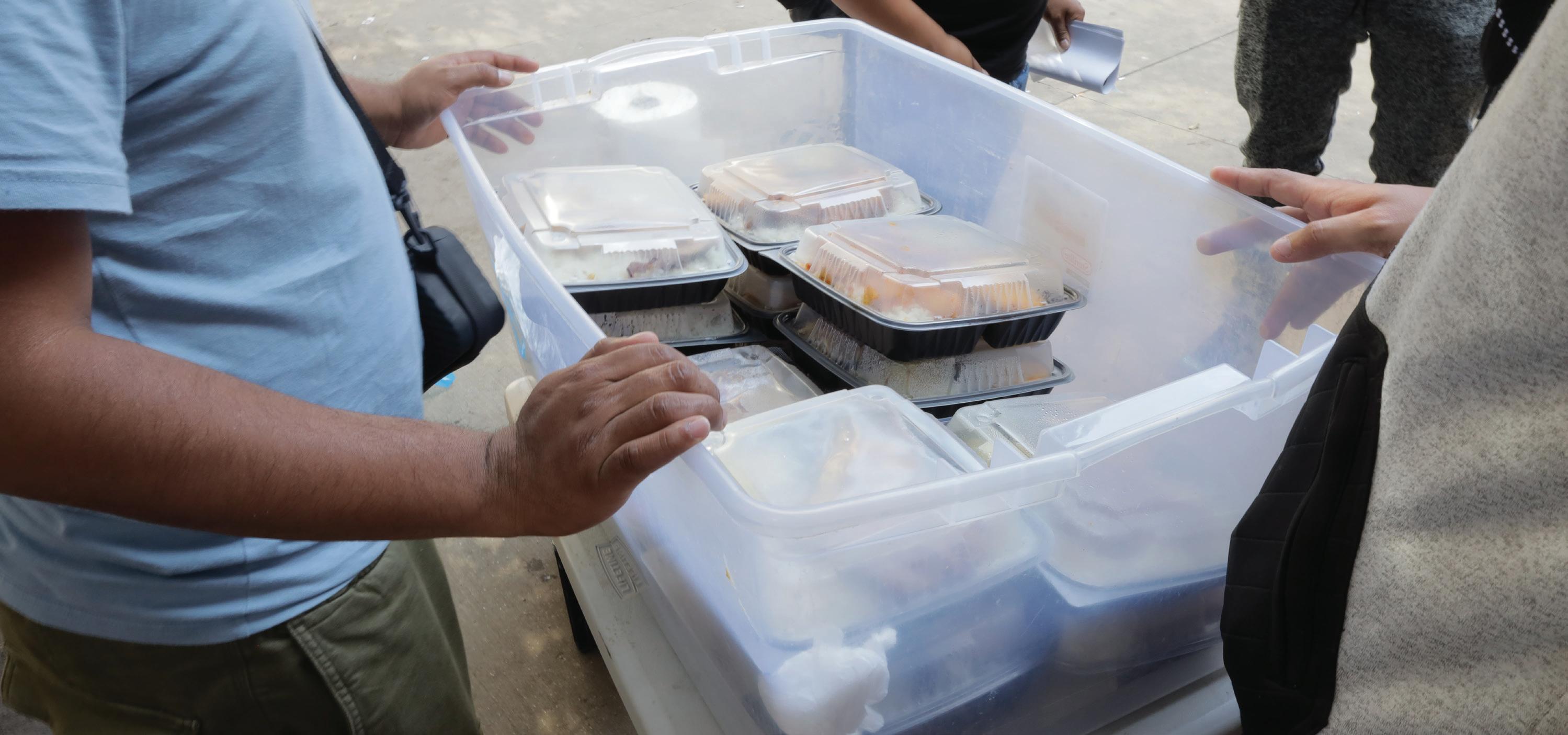
But efforts have failed, pushing many to sell without a license. While some may be ticketed or apprehended from time to time, police often only respond if there are complaints, according to Unzueta, who has worked with vendors for decades.
Conservative leaders like Texas Gov. Gregg Abbott, have sent over 15,000 people seeking asylum to Chicago and other major cities that have ‘Sanctuary City’ status according to city officials. The lack of resources for the number of people seeking asylum in Chicago has caused a humanitarian crisis and the city and some of its residents continue to find ways to adapt.
While some migrants have found temporary housing, most live in shelters or police stations, finding ways to make money to eventually find homes on their own.
Daniela said she plans to continue selling arepas to support her children. After all, she said, that it was for them for which she made the journey north.
Elizeth Arguelles, a community organizer that’s been working in her community since 2016, is the daughter of street vendors who began selling tamales when she first arrived in the country from Mexico, similarly to the new arrivals.
The first thing her parents did upon arriving in the United States in early 2000 was sell tamales on 26th street, she said. When she was in high school, she began selling tamales with her mother.
“My mom got tired of working for someone else and not having some freedom so she decided that she was going to start her own business. It was 15 years
ago since she’s been making and selling her own Tamales,” said Arguelles.
According to Arguelles, having the opportunity to sell their food gave her family, and many others like hers, a necessary sense of freedom.
“I think that’s what selling food creates. It creates an opportunity for people to take their own destiny into their own hands instead of depending on a factory job or on the government,” she said. “It also provides a community. When you’re selling tamales or really any other food you really get to know your clients, your clients become almost like family. It really creates a sense of having something that matters and being a part of something.”
Street vendors are a vital part of the community in Chicago, Arguelles said. When she was 17, Arguelles was arrested for selling tamales to provide for her family. At the time, she recalled, her community stood together and went in solidarity with her mother to have her released.
Street vendors often find their strength and sense of safety through community, she said.
“Street vendors are like a light post. Once you have a street vendor on a corner, that creates a sense of safety for people… It also provides a connection to your culture,” she said. “It creates a sense that you are not far away from home. There’s a little piece you can taste in the food or you can hear when you talk to that vendor.”
Arguelles expressed the importance of Venezuelan migrants having the ability to sell their food and connect to their community.
“For Venezuelans, I think it’s important because it gives them autonomy and it gives them a piece of freedom that they might not be able to get. When you’re selling something you’re meeting other people, you’re getting connected to resources…It provides a sense of power, like ‘I can do this! I got this!’,” Arguelles said.
Chicago is a great city of food and has some of the best street food vendors, said Arguelles. She predicts that there will be an increase in Venezuelan street food vendors in Chicago and hopes to one day hear of success stories of vendors who have been able to build their businesses and employ other migrants from within the community.
“Since we are here in the United States everything is somewhat different, the culture is different, the food is different, and thanks to God they [the vendors] are here, and we can buy food from our country .”
Kebin
A Venezuelan migrant clientVenezuelan migrants sell food in downtown Chicago Sept. 29. Many migrants say they must find whatever ways they can to make money until they can get work permits. QUENTIN BLAIS | LA DEPAULIA
JOBS, Continued from front page
at times.
“Sometimes I have to prioritize rent over school because I don’t want to be homeless in Chicago,” Israelson said. “I have to [make] sacrifices, and a lot of the time it does end up being academics.”
According to a 2021 study from the University of Pennsylvania, employed students at four-year universities are more likely to receive lower scores on coursework than their peers who do not have jobs.
Edie Leonard, a 22-year-old DePaul senior, said her experience working on campus allows her to prioritize life as a college student more than an off-campus job would.
“When you’re a DePaul worker, you are a student first,” Leonard said. “Anywhere else you go you’re just a worker.”
Leonard works as a tour guide and an admissions front desk receptionist. She said working on campus provides unique opportunities for students.
“It’s really beneficial in terms of networking because you are working a job, but you are connected to your university still,” she said.
However, working on campus comes with limitations. Students who work on-campus at DePaul can work a maximum of 25 hours per week, which Israelson said
she “understands to an extent,” but recognizes that it can be difficult for students who work to support themselves financially.
Leonard also said the 25-hour limit could create financial limitations for students.
“If you are working a DePaul job and you are trying to make ends meet, you definitely need another job,” Leonard said.
For other student workers, limited hours are not the only unique difficulty of working on campus.
Maximos Villaseñor, a 21-year-old DePaul junior, works as a resident assistant (RA). He said that one drawback to the job
is the fact that he lives where he works.
“Although you’re not always ‘on duty,’ you always are an RA,” Villaseñor said.
While it seems like Villaseñor rarely gets a break in his own living space, he is happy he can “build those skills of leadership” that come with the position while living on campus for free — a perk that makes college much more affordable.
While it is true that RAs do not have to pay for rent, Villaseñor said that the position has its own financial limitations. For instance, the partial meal plan RAs receive only includes 45 meal swipes and 300 flex dollars per quarter.
“If you do the math for how long we are on campus, that’s not enough to have one meal per day,” Villaseñor said.
According to a study from the U.S. Bureau of Labor Statistics, Chicago residents spend more of their income on housing and food than the national average.
Because of this, Villaseñor also works as a desk receptionist for the dorms to help pay for his meals. Even though he does not pay for housing, he still has to work a second job because “the cost of living in Chicago is just really expensive.”
Students in Chicago face exceedingly higher expenses than other students around the country, as RentCafe finds that the cost of living in Chicago is 50 percent higher than the national average.
Israelson adjusted her schedule to accommodate her work hours, like taking more asynchronous classes. Still, she said this choice has negatively impacted her life at DePaul.
“I’m not getting the college experience of being on campus as much,” Isrealson said. “It sucks.”
She and other working students want their peers to understand that working while earning a degree makes it more difficult to get the most out of college.
“This undergrad degree is a lot when you’re also focusing on living,” Israelson said.
Optimism, trust prevail between teachers, mayor
By Meghan Lajewski Contributing WriterWith the current contract for Chicago teachers expiring in June 2024, teachers hope Mayor Brandon Johnson’s educational background will foster better communication and build trust that will avert the strikes recent mayors have faced.
Johnson started as a social studies teacher at Jenner Academy Elementary in Cabrini-Green on the North Side of Chicago and a union organizer during the 2012 teachers’ strike, according to Johnson’s campaign website.
Johnson’s direct involvement with Chicago Public Schools (CPS) sets him apart from previous Chicago mayors, as listed in the Chicago Public Library’s biographies of Chicago mayors.
Under previous mayors, teacher strikes lasted over a week. In 2012, the teachers’ strike went on for nine days before an agreement was reached between the union and former Mayor Rahm Emanuel. Mayor Emanuel shut down 50 public schools a year later, according to the Chicago Tribune.
In 2019, the Chicago Teachers Union (CTU) went on strike for 11 days during former Mayor Lightfoot’s time in office, said the Chicago Teachers Union Communications. The contract led to smaller class sizes and more benefits for teachers.
After the strikes, the agreement included allocating $35 million to decrease class sizes, a 16% raise in wages and required schools to have at least one nurse and social worker according to the 2019 teachers contract.
CTU continues to fight for more affordable housing for teachers and students and increasing sanctuary schools which was not resolved in the last contract as stated on their website.
With both former mayors of Chicago having a rocky relationship with educators, a new path could be forged by Mayor Johnson if a strike is avoided, said Wendy Weingarten, a CPS physical education teacher.
As he nears his fifth month in office, Johnson made changes that will last beyond his term. A June press release from the mayor’s office said CPS teachers would receive
12 weeks of paid parental leave starting in the 2023-2024 school year.
“This policy defines when City of Chicago employees may take a specified period of paid leave following the birth, adoption or foster of a child or children,” the policy states.
With the CTU and Johnson pushing policies like 12 weeks of paid parental leave, teachers remain optimistic about communication and collaboration.
“I think this new board of education is more willing to hear [the teachers and students]. It’s such a diverse board of education,” said Weingarten, a union delegate for her school. “We have not seen [this] in the past,” she said.
A union delegate possesses the responsibility to ensure their school follows the teacher’s contract and attends monthly House of Delegate meetings. The union delegate also prepares in case of a strike during the year a contract expires, according to the CTU summary of delegate responsibilities.
Michelle Morales, a volunteer member of Chicago’s Board of Education appointed by Johnson, shared similar sentiments about the board.
“We’re all using our varied experiences and expertise to try to lean in and really build out our vision,” Morales said.
The mayor appointed almost an entirely new board in July 2023 except for vice president Elizabeth Todd-Breland, said a press release from the mayor’s office. Todd-Breland is the only remaining member from former Mayor Lori Lightfoot’s board.
More shifts will come as the city utilizes a “bridge board,” Morales said.
The current board has an abridged term that ends in January 2025, when a hybrid board will come into effect. According to Morales, 11 members will be appointed by the mayor and 10 will be elected. The board will be completely elected by January 2027.
The Chicago Board of Education “is responsible for the governance, organizational and financial oversight of Chicago Public Schools (CPS)...” according to the board’s website.
Created in 1840, the board shifted in 1995 after a series of acts that allowed for-
mer Mayor Richard M. Daley to appoint five board members to the Reform Board of Trustees. In 1999, the name changed back to the Chicago Board of Education and expanded to seven board members.
For now, the priority is “to provide governance to the institute of Chicago Public Schools,” and “to work closely with CPS leadership,” Morales said.
Morales said the board will prioritize Chicago Public Schools students and their families first.
“This administration presents a really profound opportunity for deeper collaboration,” Morales said. “At all levels...in order to move forward initiatives and policies that will impact people for the rest of their lives.”
Mayor Johnson acts as the bridge between all parties to build trust, communication and collaboration as a former CPS teacher and an organizer at the CTU, said Morales
“I do think there are higher expectations,” said Weingarten. “I think it will be more noticeable.”
That path is not an easy one, said Weingarten. Class size, staff shortages, fair wages and fighting for benefits for students remain consistent issues CTU will push for in a new contract according to their website.
Each fiscal year, teachers receive $250 to use for their classroom by the board as stated in the 2019 teachers’ contract. Every
teacher she knows spends much more out of pocket for students, according to Weingarten.
“You want to do right for what’s right for your kids,” she said.
Future educators share the same sentiment as current teachers. “I would first want to work in the place where I am able to make the best impact on students,” said DePaul junior Ben Schwartz. Being an elementary education major, he hopes to teach social studies to fourth and fifth graders.
He said he would rather teach in Chicago Public Schools despite not growing up in the area.
“As a public school teacher, I just would like to feel valued,” Schwartz said.
Providing more support to staff and increasing wages to provide meaningful change instead of superficial acts like allowing casual dress on Fridays is more appealing to future educators, he said.

“Obviously I have a lot to learn from experience,” Schwartz said.
The importance of having dynamic experiences across the board from teachers to political leadership is essential in making an impact, said Morales, also a DePaul alumna.
“This board represents so many backgrounds, races, ethnicities [and] experiences in CPS as students or parents,” Morales said. “[It] will create space for young people to see themselves in [the board].”
 YÙ YÙ BLUE | THE DEPAULIA
YÙ YÙ BLUE | THE DEPAULIA
Ivelisse Diaz, founder of Las BomPlaneras Unplugged, sings and dances to Bomba music during the 55 year celebration of the Young Lords at DePaul’s Cortelyou Commons on Sept. 18. Diaz brought students and faculty on stage with her, where she taught them steps and songs to Bomba music.
YOUNG LORDS, Continued from front page
their continued efforts to fight.
“The Puerto Rican community may not be in this neighborhood anymore, but there have been several generations of young Puerto Ricans who have found inspiration in the struggle of the Young Lords,” López said.

Paul Mireles, deputy chairman and co-founder of the Illinois chapter of the New Era Young Lords, became interested in the Young Lords after former president Donald Trump announced he was running for president in 2015.
After hearing the announcement, Mireles became inspired by the organization’s art that depicted the fight for social justice, similarly to the Black Panther Party’s artwork.
But it wasn’t until Mireles lost his step father to homelessness and drug abuse in 2021 that led him to call up the original Young Lords organizers.
“I just felt like there was more that needed to be done,” Mireles said.
There are now 29 active New Era Young Lords members in Illinois. While it is a Puerto Rican founded organization, Mireles said people who identify as Mexican, Black, Haitian and Panamanian are members of the organization as well.
“We really want to push that narrative of that coalition between us as oppressed people together, not Black oppression looks like this and Latino oppression looks like this,” Mireles said. “It’s the same oppression.”
A common misconception about the Young Lords is that they are only rooted in violent gang activity. However, the story is “twofold,” Mireles said.
The group began as a gang in the 1960’s to defend themselves, and after facing displacement, shifted their focus to provide free resources to the community such as breakfast programs.
Their values are still rooted in service today.

The New Era Young Lords work with a food distribution center in Humboldt Park called Casa Hernandez Community Space & Free Store on 3519 on W. North Ave.
“Fifty five years later, we’re still fighting
against police brutality,” Mireles said. “They fought against health care, and again, 55 years later, these same issues: health care, education, homelessness, police brutality and gentrification. They may be called different things from then to now. They may look different in some way, but their core concepts are still there, and unfortunately, we’re still fighting that.”
Echoing Mireles, Ivelisse Diaz took the stage with seven other members of La Escuelita Bombera de Corazón to sing Bomba music. She founded Las BomPlaneras Unplugged, an all-women group, in 2010 to give visibility to women performing Puerto Rican Bomba and Plena. She is also part of La Escuelita Bombera de Corazón, which teaches Afro Boricua Bomba dancing classes in Humboldt Park.
Bomba has been a way to protest against struggles many Afro Boricuas have faced, Diaz said.
Since the Spanish colonial period, enslaved Afro Boricuas, who worked on sugar plantations along the coast of Puerto Rican, used Bomba as a way to use their voice. Hundreds of years later, Diaz said the music continues to be a way to uplift voices.
“These are the stories that never made it to the books because they weren’t interesting enough,” Diaz said. “It’s because these stories are the same stories that empower us and let us know that we made it because this is music for over 500 years, baby. It’s not going to stop. It will never stop.”
The room was ignited with the sounds of drums and Diaz’s booming voice, as she told everyone to join with her. She and others in the group danced to the rhythm of the drums while a red scarf swayed to the movements of her body.
“Some of you have never sung on level 10 Because you’ve been told to be quiet, so today we’re gonna get loud,” Diaz said.
Diaz asked students to get on stage and learn some steps and chants with her. By the end, students and faculty were dancing together in a circle, watching and cheering each other on. She hoped that sharing Bomba would help ignite passion for younger generations to come.
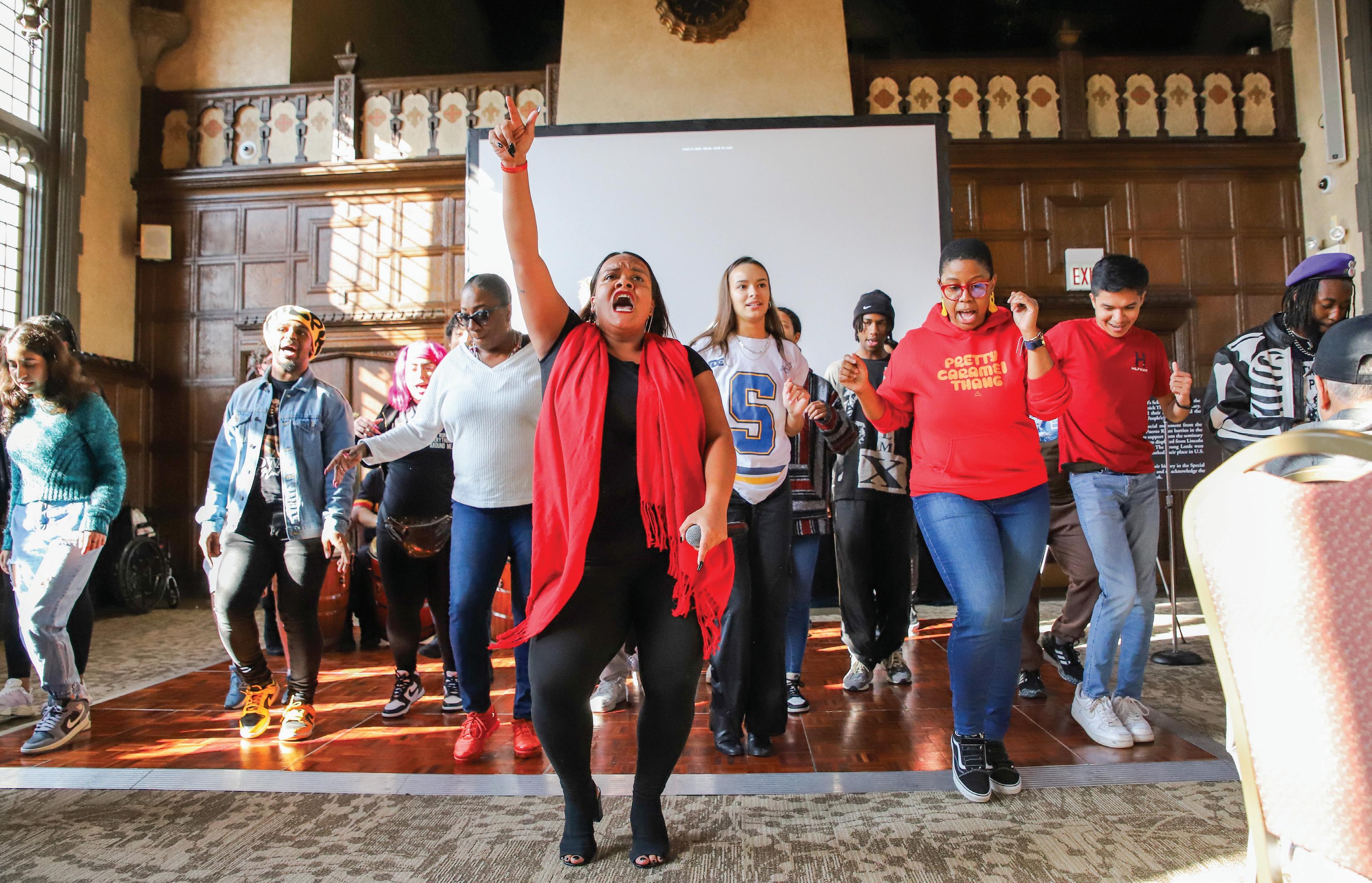
“I’ve been political all my life, and my
weapon is Bomba,” she said.
Frontany said that she remembers dancing and listening to music during protests, and she said music has always been a way of
“bringing people together in spaces.”
“I see how the young ones are reviving everything that the young Lord used to do back then,” Frontany said.
CARY ROBBINS | LA DEPAULIAOpinions
No, the government shouldn’t shut down
By Carly Witt Opinions EditorThe government didn’t shut down. But what does that mean, and why is it so important?

I don’t know if it's just me, but when I heard the government would shut down, my first thought was, what does that mean for my daily life? The 2019 government shutdown was the longest recorded in history, and occurred
lose their jobs as well. Employees should not have to worry that one day, the government will shut down and they will be furloughed or out of a job. When a shutdown occurs, each government department has its own procedures and plans for what will happen during the shutdown to its employees. Those plans say who is essential, who would work without pay, and what activities come to a stop. Those plans are basically in place as
interrupting their daily life.
This trickles down and affects local government workers and small businesses. The bottom line is people are not going to receive paychecks, they are going to be out of work and even temporarily, that can damage people’s financial well-being.
There have been 10 government shutdowns in our country’s history, the first one in 1980, which only lasted one day. The longest shutdown in 2019 lasted 35 days, from Dec. 22 to Jan. 25. Each time, the House and Senate were split between Democrats and Republicans. The shortest were in 1984 and 1986, which each lasted four hours.

Shutdowns have an impact on more people than government employees, such as those wishing to renew their passports. It can also delay infrastructure projects, like improving highways and modernizing utilities in rural communities. The military suffers a substantial amount, with personnel still working, but without pay.
Shutdowns also impact smallbusiness owners. The U.S. Small Business Association will not accept or review any new business loans for small businesses, and air traffic controllers and TSA workers will work without pay, which can also lead to delays at airports.
The closure of national parks is another disturbance when the government shuts down. During the 2018-19 shutdown, former President Donald Trump decided to keep some parks open, but this ultimately wasn’t good. The parks also lose a substantial amount of
money during shutdowns. During the 16-day shutdown in Oct. 2013, the national parks lost $414 million in revenue and reported 7.88 million fewer visitors, wrote Andrea Sachs and Sofia Andrade for the Washington Post.
When the government shuts down, it affects people of all economic classes, including military personnel. The government needs to realize that when they don’t compromise and agree, working class families suffer. They are suddenly not getting paid, without much time to prepare. Families who own small businesses won’t be able to get additional loans and funding, which could be detrimental to that family’s income if the shutdowns last for a while. If these happened more frequently, it could cause households to be homeless or seeking another government function to help them get by, the same government that caused them to be in that spot. No one wins, and our government should be able to function without shutting down. It was unclear how long the predicted October shutdown would have lasted, but many assumed it was going to last longer because of how divided the House and Senate is.
Our government needs to realize that while a shutdown may seem insignificant to them, it has a much larger impact on the public and the working class.
The views expressed in this section do not necessarily reflect those of The DePaulia staff.



EMPOWERING MINDS AND
DePaul group makes impact on women’s
By Vanessa Lopez & Una Cleary Social Media Editor & Focus Editor
With World Mental Health Day approaching Oct. 10, a DePaul student organization CHAARG, an acronym for “Changing Health, Attitudes, and Actions to Recreate Girls,” reflects on the group’s role in promoting positive mental health on campus.

CHAARG is present on more than 115 college campuses and offers students the opportunity to prioritize their well-being. The organization is dedicated to supporting young women in main taining their men tal health while also encourag ing them to embrace their femininity and empowerment in the gym.
Sydney Tamborski, a se nior and DePaul CHAARG ambassa dor, said she discovered a safe and supportive envi ronment for her mental health through the organization.
“I think that fitness is a great stress and mental health reliever for people, es pecially college students,” Tamborski said.
Members of CHAARG meet weekly for workouts at fitness centers in the Chica go area and participate in campus-based events. Some workouts have included pi lates at Club Pilates and high-intensity in terval training at Barry’s Bootcamp.
The group emphasizes gym camaraderie so that members can incorporate it into their daily lives.
The purpose of World Mental Health Day is to increase global awareness of mental health. This year, the World Foundation
for Mental Health’s theme for 2023 is, “mental health is a universal human right.”

According to the National Center for Biotechnology Information, “exercise improves mental health by reducing anxiety, depression and negative mood, and by improving self-esteem and cognitive function.”
The group also aims to squash the stereotype that the gym is primarily a male environment.
“The gym
held throughout the year in addition to group workouts. Some of these social events include CHAARG’s annual formal, welcome party and weekly small group socials.
However, despite CHAARG’s presence at DePaul since 2018, the group’s secretary Shuyler Serafin said that membership numbers have been stable for some time.
“We’re interested in spreading the word about our existence on campus,” Serafin said. “I think that if people knew what we do, they would be interested in joining.”
The group has a total of 83 members on campus, an increase of 66 members the previous academic year. Membership numbers differ between quarters, as a single quarter membership costs $40.
“Our main goal is to continue to grow,” Serafin said. “I think it is really nice to have a place where you can go to feel relaxed and calm. CHAARG should be a mental and physical safe space.”
Having a safe space to release stress and exercise is a necessity for college students.
“These are basic rights,” Clev’anique Edwards, CHAARG VP membership, said. “It’s a basic right to be comfortable with where you are and what you do. We do that with fitness, but we also do that with lifestyle.”
to walk into the gym,” Tamborski said.
According to a Women’s Running survey, 76% of women felt uncomfortable exercising in public places, and 63% of women changed their behavior depending on who was in the gym.
Members also participate in social events
Maintaining good mental health for students remains one of the campus’s top priorities, according to the Division of Student Affairs, DePaul has numerous resources listed on their website including University Counseling and Psychological Services (UCAPS), and the Office of Health Promotion and Wellness.



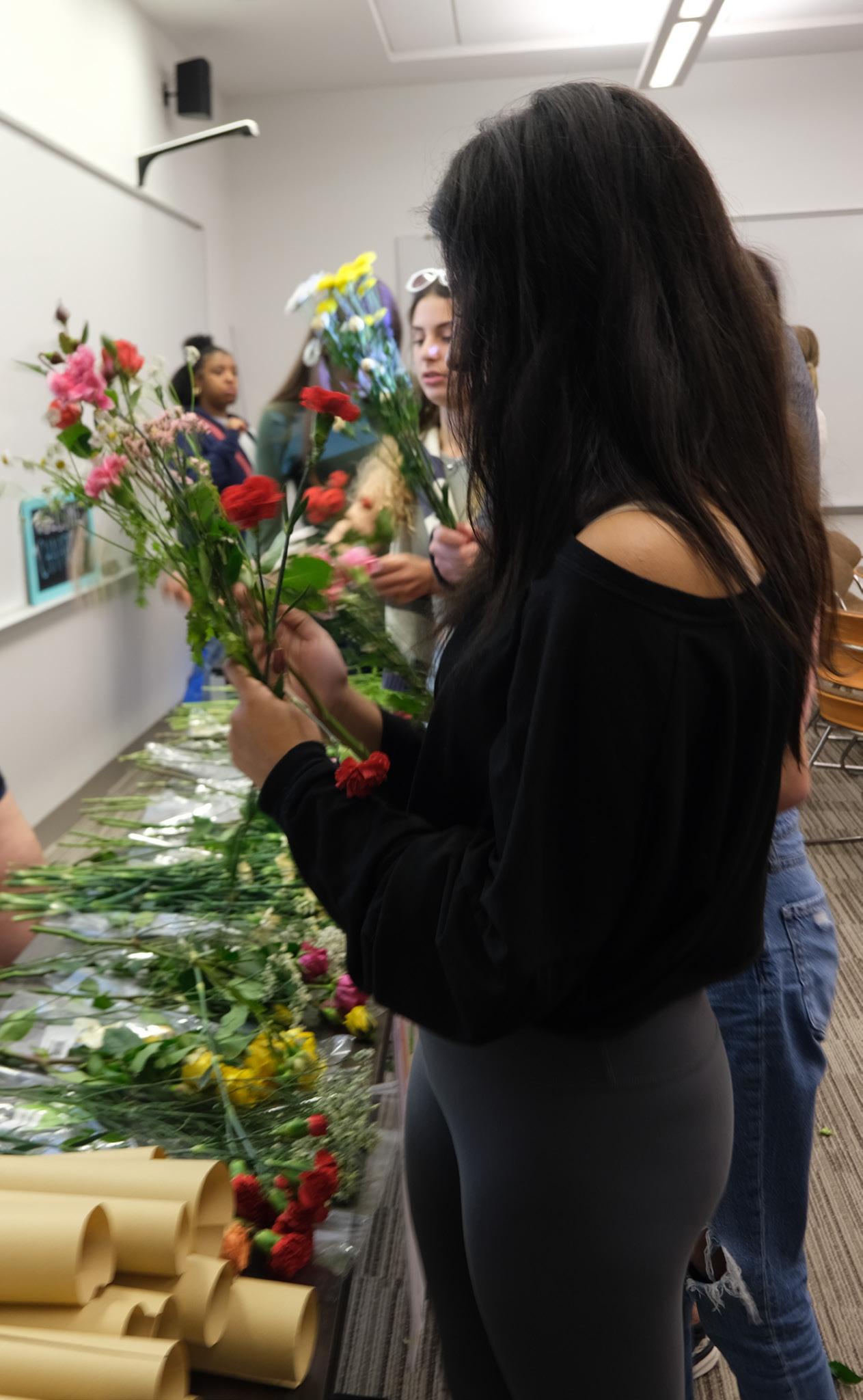
La DePaulia
Festival de danza en Chicago une culturas latinoamericanas
Bailarines de toda la ciudad se unieron y mostraron sus raíces latinas en el primer Festival de Danza Latino de Chicago (CLDF) el pasado 30 de septiembre, organizado por el Centro Cultural Latino Internacional de Chicago (ILCC). El festival se llevó a cabo en diferentes lugares, uno de los cuales fue Humboldt Park, e incluyó a 37 grupos de baile con de 16 países latinoamericanos diferentes.


El ILCC es una organización multidisciplinaria pan-latina que organiza una variedad de eventos, incluido el Festival de Cine Latino de Chicago. Mateo Mulcahy, el subdirector ejecutivo de ILLC, dijo que comenzaron a planificar el festival de danza después de darse cuenta de que no había otro festival de danza en la ciudad que ofreciera una vista “completa” de todas las culturas latinas y sus bailes.
“En los últimos años, hemos hecho un esfuerzo consciente por diversificar nuestra programación”, dijo Mulcahy. “Hemos presentado mucha música, danza, teatro y comedia, pero lo hemos ampliado significativamente”.
Los diversos tipos de bailes latinos presentados en el festival incluyeron bailes tradicionales y folclóricos, modernos y otros populares como salsa, merengue, bachata, samba y tango. Casi todos los bailes fueron coreografiados por latinos, una estrategia de Mulcahy para “asegurarse de incluir a toda nuestra comunidad de baile latina”.
Pepe Vargas, el director ejecutivo y fundador del centro cultural, dijo que al trabajabar junto a Mulcahy, su visión era que el evento “nos uniera”.
“Las grandes diferencias que vemos entre nosotros residen en la riqueza de nuestras culturas”, dijo Vargas. “Des
cubrimos eso con la música, el cine, la poesía y la danza. Hay tanta diferencia incluso dentro de cada país”.
Miembros del Grupo de Baile Garifuna Laruni Haiti estuvieron entre los que compartieron su cultura cuando subieron al escenario “Subelo!” en el Picnic Mundial por la Paz el mes pasado.
El grupo de baile se formó en 2010, compuesto por una variedad de percusionistas, cantantes y bailarines especializados en varios bailes culturales, según dijo Fidelis Huestes, miembro del grupo de baile.
El Hunguhungu, un baile oscilante, fue uno de los bailes que el grupo presentó en el festival. También incluyeron Punta, que es el baile más popular, según
los miembros del grupo, el Chumba, que es similar a la salsa, y un baile combinado que es una mezcla de Hunguhungu y Punta.
Laruni Hati había actuado en varios eventos en el área de Chicago antes de la pandemia y se reunieron para el festival, dijo Huestes. La mayoría de sus bailes son beliceños-americanos pero tienen raíces en Honduras y Guatemala.
Huestes dijo que estaba emocionada de participar en el festival y compartió la importancia de la participación del Grupo de Baile Garifuna Laruni Hati.
“Fue una muestra de nuestra cultura y para que la gente sepa que Belice es parte de América Latina y que es el único país de habla ingles en América Latina. Tam -
bién mostrando que hay diferentes culturas en Belice en sí... Estoy totalmente emocionada y sé que otras personas están emocionadas de vernos en el escenario... Queremos asegurarnos de que la ciudad de Chicago sepa que todavía estamos aquí y que existimos”, dijo Huestes.
El grupo de baile del Centro de Artes Peruanas también participó en el festival. Rubén Pachas, el director del Centro de Artes Peruanas, y su esposa y co-fundadora, Jessica Loyaga, han estado enseñando danza peruana a estudiantes en las escuelas públicas de Chicago. Su objetivo ha sido promover la cultura peruana desde que emigraron de Perú en 2005, dijeron.
Continúa en la siguiente página
Continuación de la página anterior
Cuando llegaron a Chicago, comenzaron a enseñar en CPS. Luego, abrieron su organización de baile, dijo Pachas.
Pachas y su esposa formaron el grupo de baile con sus estudiantes actuales y antiguos. El grupo de baile le dio a Pachas la oportunidad de enseñar a jóvenes de diversas edades y nacionalidades sobre la cultura peruana a través de la danza, dijo.
“El grupo tiene la característica de ser un grupo de bailes indígenas prehispánicos, pero también realizamos bailes coloniales y postcoloniales, que abarcan todos los bailes de la era republicana”, dijo Pachas.
A través de este grupo de baile, Pachas y su esposa no solo educan a sus estudiantes, sino que también los ayudan a construir su autoestima.
“Es lo que hace el baile. Te da seguridad en ti mismo y aumenta tu autoestima”, dijo Pachas. “Te muestra que puedes hacer cualquier cosa, no solo bailar, sino muchas cosas. Eso me hace sentir feliz... eso es lo que el baile ha hecho por mí. Cuando era joven, aprendí muchos valores de las culturas indígenas, y por eso me interesé en promoverlos”.
Pachas dijo que ha tenido la oportunidad de ver cómo sus estudiantes aumentan su autoestima mientras les enseña bailes indígenas tradicionales de Perú. Cuando era niño, Pachas viajó y vivió con comunidades indígenas en Perú y pudo aprender estos bailes de ellos.
Compartir estos valores ayuda a
Pachas a mantener vivas las tradiciones de las culturas indígenas entre las generaciones más jóvenes.
“Eso es lo que enseñaba en Lima, Perú, y eso es lo que hemos enseñado aquí en las escuelas... así es como las culturas indígenas aprendieron, a través de la transmisión de valores, la transmisión de conocimientos”, dijo Pachas. “Eso es lo que hacemos, trans -
Las Chicago Red Stars celebran el Mes de la Herencia Latina por primera vez
Por Teddie Waxler Escritoro ContribuyenteLas Chicago Red Stars acaban de convertirse en Las Estrellas Rojas, en honor al Mes de la Herencia Latina.
El equipo de fútbol profesional femenino de Chicago, uno de los 12 equipos de la Liga Nacional de Fútbol Femenino de los Estados Unidos, celebró por segunda vez este año la herencia latina de sus jugadoras y fanáticos.
Nombrado en honor a las cuatro estrellas de la bandera de Chicago, el Red Stars juega con inmenso orgullo por la ciudad. Las jugadoras del equipo representan una variedad de nacionalidades, con varias jugadoras y miembros del personal que provienen de origen latino, incluida Jill Aguilera, una centrocampista puertorriqueña.
A pesar de la presencia latina, el equipo comenzó a conmemorar el Mes de la Herencia Latina el año pasado, a pesar de haber sido fundado desde 2006.
Los miembros del personal del equipo participaron por primera vez en el Desfile del Día de la Independencia de México en La Villita el año pasado y nuevamente el 16 de septiembre. Llevaron camisetas del mes del orgullo latino y llevaron una gran pancarta que decía, “de Chicago”, debajo del nombre: Las Estrellas Rojas.
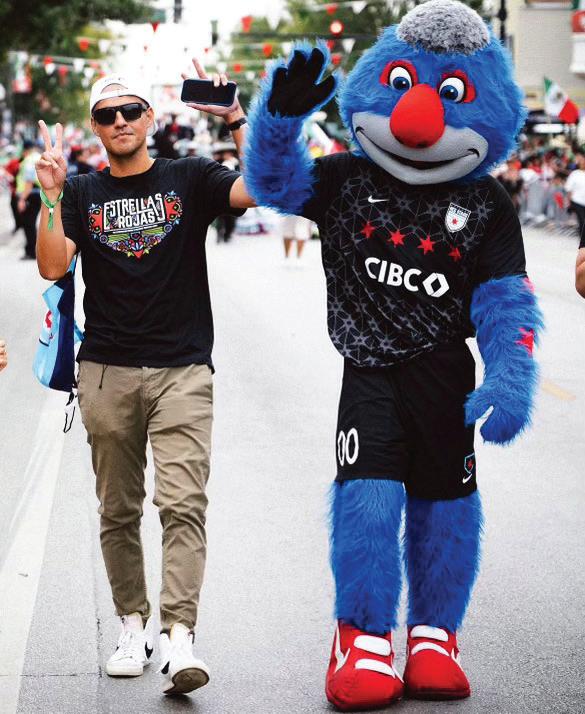
La mercancía del Mes de la Herencia Latina incluye una camiseta y una bufanda. Ambos son negros con un diseño colorido y detallado, como el papel picado. Centrado en el nombre del equipo en español, Las Estrellas Rojas, el diseño encapsula la alegría que el equipo siente al jugar para sus fanáticos.
Las camisetas se regalaron y estuvieron disponibles para su compra en la Noche de la Herencia Latina del equipo el 30 de septiembre, cuando el equipo se enfrentó al Racing Louisville FC. Según el equipo, $5 de cada compra se donaron al Fondo DREAM de Illinois, y recaudó $600, según un portavoz del equipo.
A principios de 2021, el club firmó un acuerdo único con Univision Chicago, la principal empresa de medios en español de los Estados Unidos, para transmitir todos sus partidos durante el Mes de la Herencia Latina del 15 de septiembre al 15 de octubre en español.
El acuerdo se ha renovado desde entonces durante las temporadas 2022 y 2023.
Establecer raíces y conexiones en esta ciudad siempre ha sido una de las principales prioridades de las Red Stars, dado que el fútbol es una forma de vida en la mayoría de las naciones latinas, esta conexión es importante y apropiada. No se sabe por qué la organización tardó tanto en celebrar el orgullo por su herencia latina
mitimos esto a través de prácticas, conocimientos, y ellos lo recogen, lo desarrollan y lo adaptan a sus vidas”.
El centro cultural planeó cuatro fechas para celebrar el festival en diferentes vecindarios de Chicago, dijo Mulcahy.

El festival comenzó en la Escuela de Música Folklórica de Old Town en el North Side. Luego se expandió al
Centro Logan de las Artes en el South Side, y el evento más reciente se celebró en el Picnic Mundial por la Paz en Humboldt Park en el North-West Side. Su último evento se llevará a cabo en el Centro Cultural Segundo Ruiz Belvis en 4046 W Armitage Ave. el 12 de octubre.
y la de esta ciudad, pero es un paso en la dirección correcta. No solo han dado varios pasos adelante
para celebrar este mes importante, sino que la liga también lo ha hecho, con los otros 11 equipos y ciudades.
Arts & Life DePaul Art Museum unveils ‘Life Cycles’

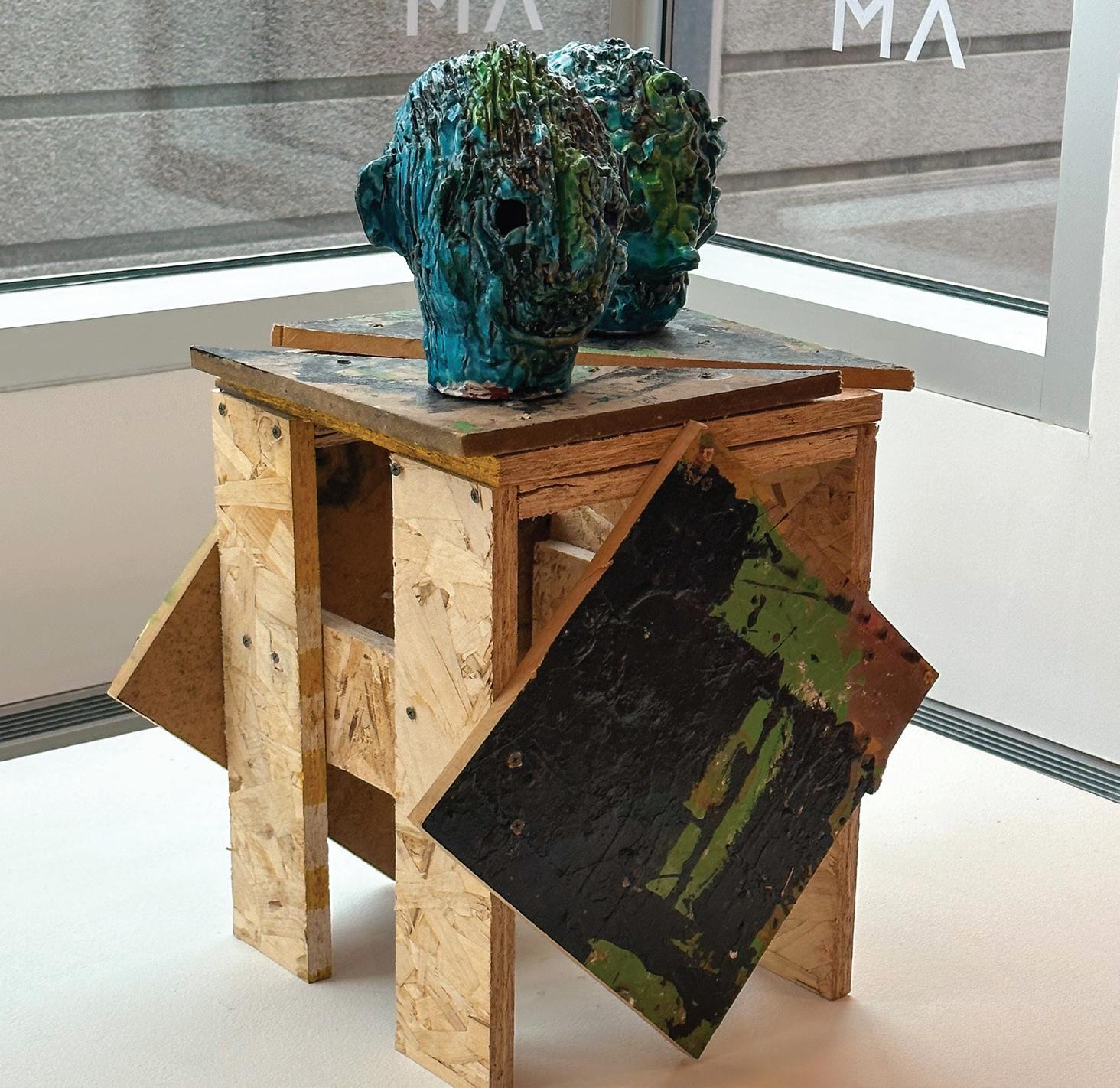
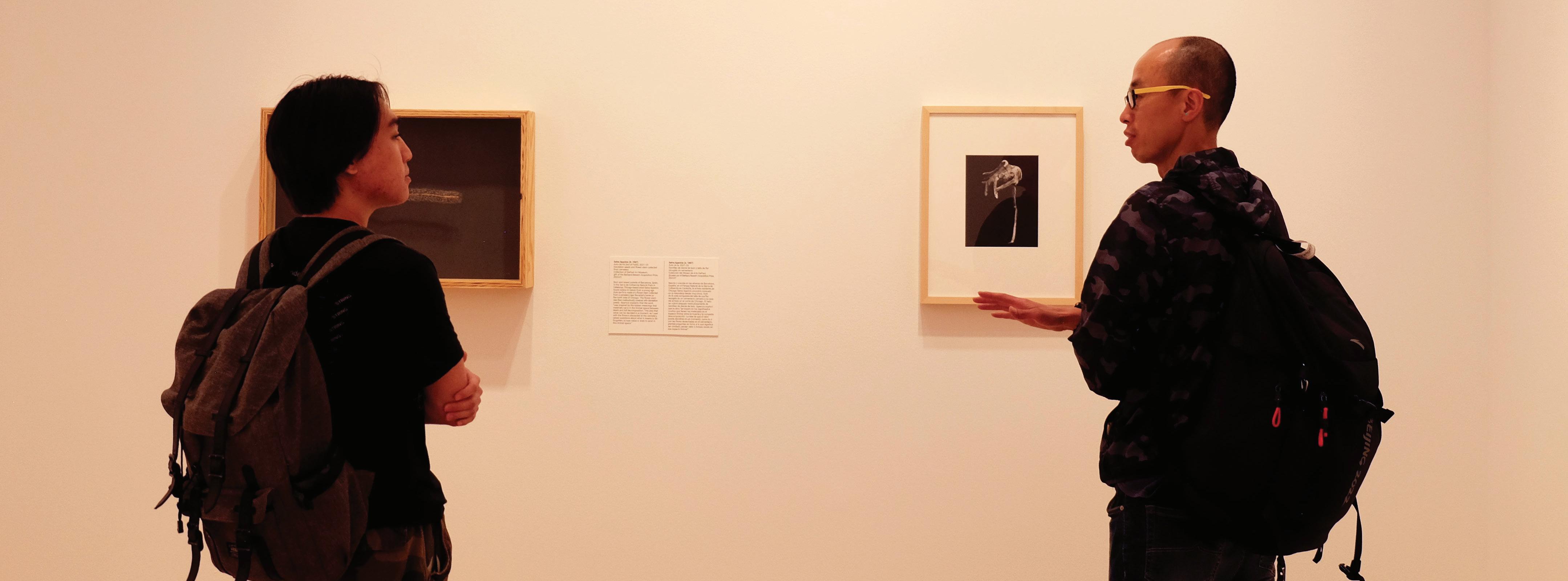 By Carly Witt Opinions Editor
By Carly Witt Opinions Editor
Upon entering the DePaul Art Museum (DPAM), visitors are met by the simplistic, modern layout of the exhibits and the variety of art on display. Their newest showcase, “Life Cycles,” is a lavish and bright presentation curated by DePaul students and featuring local Chicago artists. DPAM describes its latest exhibit as “the processes and materials that structure and subtend life while also examining the life of art objects.”
When stepping into the display, it is apparent that each artist has their own interpretation of the theme. Some featured pieces included giant tapestries made of different materials and ceramic sculptures showcasing identity. Others are small paintings or a wall of cigarette boxes collected in Chicago’s streets. Many artists took inspiration from their past when making the pieces featured. Curators and exhibit managers of DPAM chose from art in their permanent collection and new contemporary Chicago artists not in their collection, totaling over 50 artists for this collection. Museum staff also collaborated with DePaul University student employees to select the artwork. DPAM has more than 4,000 objects in its collection, and 10 Chicago artists were new to the collection. One local artist, William O’Brien, made his piece over 16 years ago for his first solo show, with the work now featured in “Life Cycles.”
“It was like visiting an old friend in some ways because I feel like I definitely remember the time that that piece was made and why I made it,” O’Brien said of his sculpture “Workshop.” “That sculptural work was really about me trying to understand what my voice was as an artist, and I think a lot of the figurative pieces were not necessarily self-portraits, but I am queer.”
Elnaz Javani, another featured Chicago artist, works with textile fabrics by layering them together to make collages. Javani came to Chicago from Iran in 2013 and could not work as an artist until she became a U.S. citizen. This process took eight years, putting a halt to her creative efforts.
“I lost a lot of opportunities that I was actively doing before coming to the U.S.,” Javani said. “[It’s hard] not being able to go out and also not having documents [to] show art or get grants.”
Javani said her pieces can take extremely long to craft because she experiments with different fabrics and how to make each piece
new and different.
“I’m constantly playing with all kinds of printing techniques and drying processes, and it’s a lot of chemicals involved with those techniques, so experimenting what would happen if I mix this with this and what fabric reacts to that,” Javani said. “It’s like a lot of that discovery happens in the process, which I really enjoy, like a kid in a playground.”
Javani said she has a unique way of thinking about the materials and how she can craft them,
“Fabric is more like bodies,” Javani said. “It’s like humans. Besides the skin, I see them as more sculptural, and so there’s endless love to that that I would like to explore and play with that material.”
Laurie Hogin is a Chicago oil painter who uses ornate frames and parodies of 17th-century Dutch still life paintings with modern themes.
“In this case, I use monstrosity and a reference to environmental poisoning to suggest that the ideological position represented by that history of painting — seeing the world as eternally consumable — needs to be disrupted by the reality of the consequences of such an ideology,” Hogin said.
The exhibit’s main theme is material and how unconventional materials can show life and its cycles, and both artists use somewhat unconventional materials to make their art. O’Brien talks about how he used carpets from his apartment in his early days along with other materials to make his projects.
“At that time, I was recycling everything,” O’Brien said. “I was pulling up carpet in my apartment and putting it into the sculptures, and so that included the wood that you see actually in the sculpture was from both work I was making in the studio, and then things that were in my apartment.”
“Life Cycles” is the museum’s main attraction, taking up both of the main rooms in the building. O’Brien attended the premiere of DPAM’s new exhibit on Sep. 7.
“Usually, when there’s a lot of artists involved with something, it can be not as successful,” O’Brien said. “There’s always this posturing of artists wanting to claim space or make their voice louder than other voices in the conversation, and I was actually really inspired to see there was a lot more of equal footing in terms of both on a practical scale of a more interactive and equal participation of the viewer.”
at all.
The most common complaint Roman heard is the lack of LGBTQIA+ inclusive sex education.
The American Academy of Pediatrics states comprehensive sex education is a “critical component of sexual and reproductive health care.” Sex education is a way to develop a “safe and positive view of sexuality, build healthy relationships and make informed, safe choices regarding sexuality and sexual health.”
“People generally think of sex education as being uncomfortable because it’s something we think is really intimate,” Webb said. “But, generally, it’s something all of us have or will experience in our life.”
Roman went on to attribute discomfort with sex to American society’s connection to evangelical Christianity and the impact of purity culture.
“Purity culture took advantage of centuries of misogyny and patriarchy and made it consumable to white Christian evangelical parents in the ‘80s and ‘90s,” said Kendra Knight, an associate professor of communication studies at DePaul who specializes in sexual relationship research.
Knight said people of color, especially women and queer individuals, are more vulnerable to the impact of stigmas surrounding sex.
Because stigmas surrounding sex make the topic difficult to talk about, Knight said individuals are more likely to be uncomfortable exploring sexuality and not have important conversations
with partners. These stigma have increased mental health risks and created barriers to reporting sexual violence.
Pillow Talk’s goal is to shed light on these stigmas and “make everyone feel safe in their own skin,” Roman said.
The Pillow Talk hosts encourage students to interrupt and actively participate in the conversation.

Webb said they try to lighten the tension with jokes about our mutual experiences. “They don’t all land,” Webb said. “And that’s ok.”
Webb and Roman say that students teaching each other about sex ed creates a safe space for conversation where they can openly relate to their peers and share experiences.
“We are all just here to learn,” Roman said. “There’s nothing to be ashamed about that.”
DePaul Center 333 South State St.
Safety and pleasure go hand in hand, and the great news is that practicing safer sex can provide you with both! Let's explore some valuable tips to ensure you can enjoy intimacy while staying protected
Utilize condoms: essential STI barrier Consistent use safeguards both partners from potential transmission during sexual activity Get
Get tested: Regular STI testing is vital It informs you of infections and enables specific screenings, like Pap Smears for HPVrelated cervical cancer

“We are all just here to learn... There’s nothing to be ashamed [of]. “
Maya Roman DePaul Junior
St.Vincent’s
D E JAMZ
“SPINNING FRESH BEATS SINCE 1581”

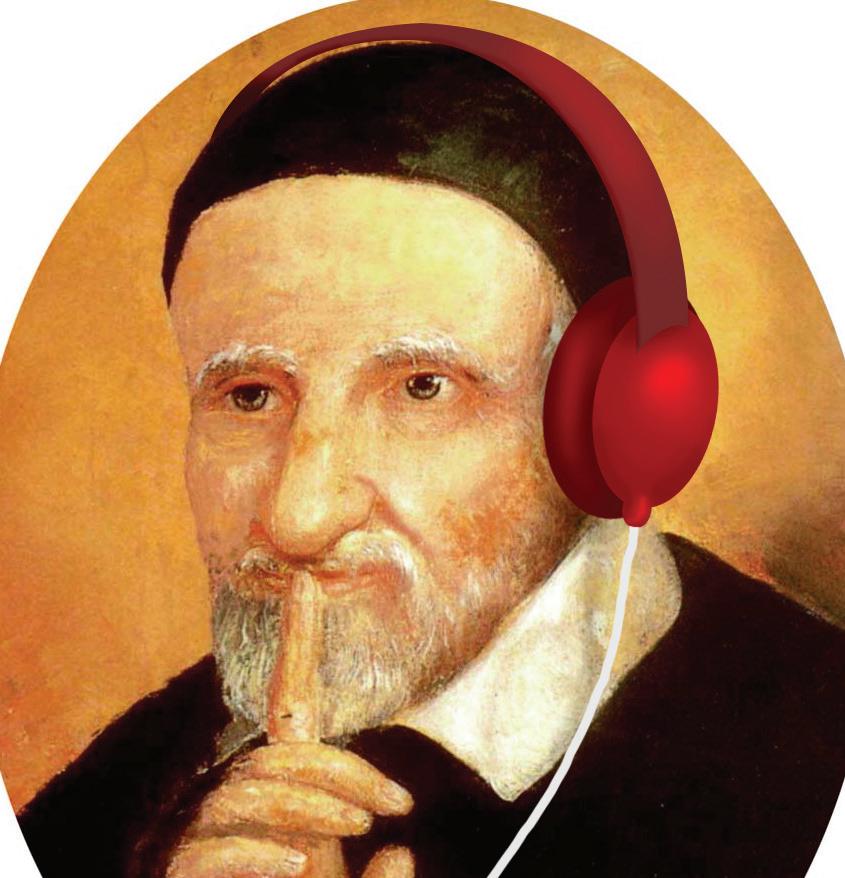 By Ryan Hinske & Una Cleary Sports Editor & Arts & Life Editor
By Ryan Hinske & Una Cleary Sports Editor & Arts & Life Editor
Aubrey Drake Graham, Drake, or Champagnepapi as we know him today, is one of the most impactful artists to children, teenagers, adults and grandparents alike. As his new album “For All the Dogs,” just released Friday, Oct. 6, the office Drake listeners, sports editor Ryan Hinske and focus editor Una Cleary, present to you the eras of Drake that have had a lasting impact on pop culture as we know it today.
“Take Care” - Una
In his prime, Drake lived in the shadows of Rihanna. Pop culture knew Rihanna first, then Drake, and this song shows the image of the perfect couple that we never recovered from. Before Drake as Champagepapi, Rihanna shaped him into the man he is today. Walking to class at 8 a.m. in my freshman year of high school would not be the same without this tune.
“Child’s Play” - Una
No better Drake line is representative
of him in his “Views” era than, “Why gotta fight with me a cheesecake you know I love to go there.” Everyone misses 2016 Kanye, but we don’t talk enough about 2016 Drake. Yes, “One Dance” and “Hotline Bling” from “Views” greatly impacted pop culture, but “Child’s Play” introduced us to a silly, girly Drake. We didn’t truly know Drake until we knew “Child’s Play.”
“Passionfruit” - Ryan
After Drake’s earth-shattering breakup, he entered a rebellious yet deeply hurt era, demonstrated by the smash hit “Passionfruit.” Drake, playing a DJ at some kind of function, proceeds to play the most depressing song in hip-hop history. Not only is “Passionfruit” unbelievably groovy, but it also shows the transition to Drake’s emo phase, showing that yes, men can be sad too.
“Massive” - Ryan
After Drake’s “Certified Lover Boy” album, where he turned his sass to overtime with songs like “Knife Talk,” Drake re-entered his sad era, creating a wavy house
Crossword

music album. Imagine Drake sitting in his dimly lit studio late at night, hand in his face, contemplating his music career. Despite this wave of emotion apparent in this album, “Massive” is a great demonstration of the movement in the record. People worldwide began breaking it down, connecting to Drake on a new level. It was truly a shock for Drake to bestow a dance album on his fans, but it is one of our fonder memories. Now, we have transitioned from growing up to Drake music to enjoying it as adults.
“Daylight” - Ryan
Now we go to Friday, when Drake dropped a 6 a.m. album with a cover design from his son, Adonis. Sonically similar to “Views,” Drake embraces his single dad era with a cameo from his son on the track, “Daylight.” The sass is back and better than ever. This is the old Drake people have been asking for. His music is revitalized and we’re here for it.
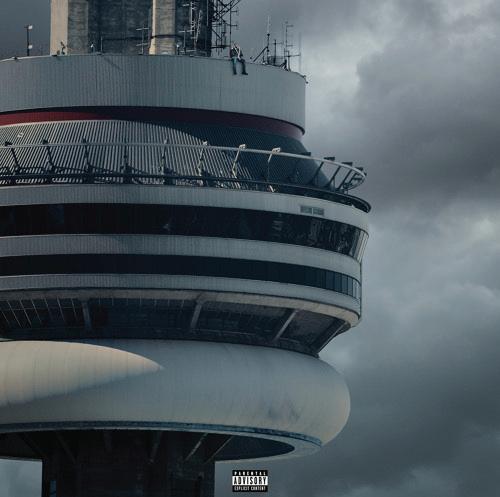


ACROSS
1) Anklebones
6) University in Texas
11) “This means _!”
14) For all to hear
15) Truly love
16) Anger
17) They are seethrough
19) “ ... heat, _ gloom of night ... “
20) “Mode” preceder
21) Munched
22) Tall Australian bird
23) Becoming morning
27) Like some humor
29) _-Wan Kenobi
30) Jewish homeland
32) Below-the-belt comment
33) Animal house
34) “Come in!”
36) Nosy thing to do?
39) Roams

41) Auctioneer’s hammer
43) Voyaging on an ocean
44) Fire remnant
46) Andrea Bocelli, for one
48) Malone on “Cheers”
49) Coral strip
51) 100-meter event
52) Clairvoyance, e.g.
53) Breastbone
56) Some instrument pluckers
58) When doubled, a dance
59) Airport schedule abbr.
60) Chunk of lawn
61) Common tree
62) Achieve total victory
68) “_ moment, please”
69) End of a bridal path
70) Contents of some office cartridges
71) The “p” in mpg
72) Be educated
73) Prepare to be tested
DOWN
1) Glass shooter
2) Legendary Muhammad
3) “Anchorman: The Legend of_ Burgundy”
4) Country in northeastern Africa
5) Put on a pedestal
6) Drink from a dish
7) Org. on toothpaste tubes
8) One-celled organism

9) Ridges on ranges
10) Caulks again, e.g.
11) Some juicy vats
12) Bouquet
13) Any “I Love
Lucy,” now
18) On the decline
23) Avoid artfully
24) Crosswise, on deck
25) Jacket worn on a blustery day
26) Intimated
28) Russian assembly
31) Decisive refusal
35) Kidney-related
3
7) Minimal amount
38) Reading lights
40) Nostradamus,
purportedly
42) Plague item of biblical proportions
45) Subscriber’s option
47) Sharp replies
50) Pointless, as an effort
53) Ice cream portion
54) Macbeth was one
55) Kind of ray
57) Far from a Mensa candidate
63) Steering device, on water
64) Jumbo coffeepot
65) Large African antelope
66) “_ be a fool not to!”
67) Attempt
Men’s hockey builds legacy at DePaul
 By Christian Maysonet Contributing Writer
By Christian Maysonet Contributing Writer









DePaul men’s hockey club is coming off its most successful season in team history.
Last season, the team was the first in school history to win the Northern Collegiate Hockey League (NCHL) tournament.
They defeated No. 1 ranked Concordia University in a hard-fought game that went back and forth until the end, finishing with an empty net goal to cap off the 6-4 win.
“We have a group of guys who go out there and play for each other, [which] is evident when you watch us practice and play,” said team captain Brock Asher.
The club team finished the season with a record of 24 wins, seven losses and one tie. Their success also saw four players make the NCHL All-Rookie First Team: freshman Liam Farrell, juniors Chris Lee, Josh Maloney and Lukas Theodosopoulos.



This year, the team’s goal is to return to regionals and then take the next step to nationals to compete for a national title.
DePaul hockey rents the ice for practices and games at Johnny’s Icehouse in the West Loop (1350 W. Madison St.) near the United Center.
The team plays a 30-game schedule as part of the American Collegiate Hockey Association (ACHA) and practices twoto-three times weekly.
“There isn’t a guy on the club that I couldn’t hang out with for hours,” Asher said. “We do a lot of fundraising together throughout the year and put in the time with our practices. I think this past year it really showed.”
DePaul went on to compete in the ACHA Division Two regionals in Chesterfield, Missouri. An eventual loss in the ACHA regional tournament to the No. 9 ranked University of Iowa Hawkeyes ended their historic season. Despite the loss, DePaul’s regional bid was their first since the 2012 season. Head Coach Dan Wood echoed the words of his captain when speaking about what makes the club so great.
“Our team is about unity and a nextman-up mentality,” Wood said.
The team is hoping to gain even more support from the DePaul student body
after a season that fell just short of going to nationals. DePaul was ranked No. 5 in the ACHA at the end of last season. The team hopes to be ranked higher going into regionals this year. To do that, they will need to be anchored by its defensive effort, which starts with the center of the defense and goalie Asher Motew.
“A lot of guys have returned this year,” Motew said. “For the most part, we have the same club from last year.”

Motew won NCHL Goalie of the Year. The senior recorded a .920% save rate. The NCHL Player of the Year award went to DePaul senior Michael Helf. The defenseman led the team with 27 goals and 36 assists, totaling 63 points for the club.
“I’ve played at the junior hockey level, which was great, but I want to get it done here at DePaul, which could be my last ride in hockey,” Motew said.
The team does not prioritize any particular opponent, but Wood said if there were any series they were preparing for the most, it would be Marian University, who has been at the top of the leaderboard in the conference in recent years along with DePaul.

The next series between the two clubs is Jan. 26 and 27.
One family’s history leads to the largest financial crisis ever in this epic theatrical event that the Chicago Tribune proclaimed “a masterwork.”





Chicagoland Sports Hall of Fame inducts DePaul professor, player
 By Ryan Hinske Sports Editor
By Ryan Hinske Sports Editor
Three significant DePaul sports figures were inducted into the Chicagoland Sports Hall of Fame Wednesday night at Wintrust Arena. They are now part of a community that includes legends like Muhammed Ali, Walter Payton and Dick Butkus.
Fred Mitchell, a DePaul sports journalism professor since 2017 who spent over 40 years as a sportswriter for the Chicago Tribune, was inducted to the hall with the Excellence in Media Award.
Mitchell’s career includes 12 books and six Hall of Fame inductions nationwide, including the Indiana Football Hall of Fame. He is the only sportswriter in Tribune history to have covered the Bears, Bulls and Cubs as the main beat reporter.
“To be recognized by other people who are renowned in Chicago sports means an awful lot,” Mitchell said. “In recent years, so many great luminaries in print media, broadcast media … to be listed among those is a privilege.”
Mitchell invited all his current students to the induction ceremony, allowing them to meet and connect with prominent Chicago sports figures.
“I felt especially honored that [Mitchell] wanted me as well as the rest of his class there to witness the ceremony,” said James Stowell III, a senior sports communication major and student in one of Mitchell’s classes. “I was happy that after 41 years of work for the Tribune, he was able to be recognized [by] a community of sports legends”
Mitchell reflected on his career as a journalist, noting that young writers can be impatient and that it takes years of hard work to gain recognition in the industry.
“[In my] early years, I was working on a copy desk,” Mitchell said. “I worked all year from 10 o’clock at night to six in the morning,
Chicago colleges connect for basketball media day
By Ryan Hinske Sports EditorDePaul hosted a media day for several Chicago area men’s and women’s basketball programs on Wednesday at the Chicago Sports Museum.
Four schools were in attendance: DePaul, Loyola Chicago, Northwestern and Chicago State.
The women’s basketball head coaches formed a panel Q&A, followed by the men’s head coaches.
They discussed their new rosters and goals for the upcoming season. Two players from each team acted as representatives.
Men’s basketball transfers Chico Carter Jr. and Jaden Henley were in attendance and said they are looking forward to the season.
“[We have to] change the culture, change the narrative of DePaul basketball and get it back to the top,” Carter, a graduate transfer from the University of South Carolina said.
Henley, one of DePaul’s first major transfers last season from Minnesota, said he and his new teammates already have great synergy.
“I’ve never been on a team with this kind of chemistry before,” Henley said. “It’s like one family.”
Head coach Tony Stubblefield is excited
about the addition of the eight new players to the men’s roster.
“I’m really pleased with the progress that guys have been making,” Stubblefield said. “It’s really been a cohesive unit up to this point.”
The women’s basketball team also has eight newcomers.
The players that attended the media day were Anaya Peoples and Jorie Allen, graduate students who stayed at DePaul this year. Peoples said the team is ramping up the intensity with their new roster.
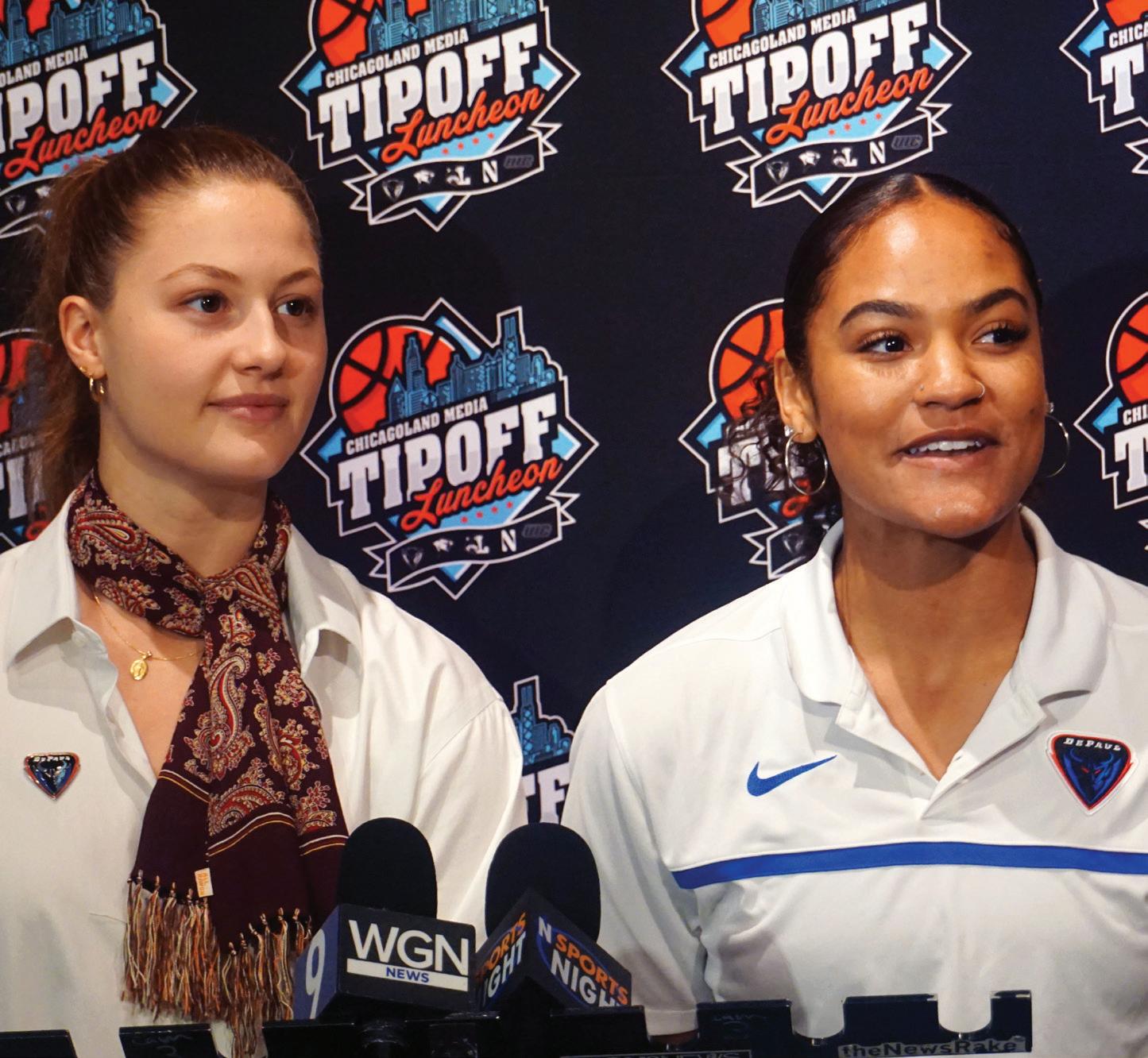
“We have a whole new team this year, so it’s exciting,” Peoples said. “We just put in some full court [defense], and we’re looking good.”
Allen is looking forward to her fourth season at DePaul and has made her goals clear.
“I think we have a great chance to make a lot of people excited,” Allen said. “We’ve got a lot of work to do, but we’re ready for it.”
Head Coach Doug Bruno took time during the women’s head coaches panel to highlight the historic implications of the DePaul season. Not only did he mention the upcoming season is DePaul’s 50th, but also that it will begin with a road trip to Iowa next weekend for a possible record-breaking exhibition game.
and I’m proud of the fact that I stuck it out.” His students say he brings this knowledge and experience to the classroom but is also welcoming and supportive.
“Every class, [Mitchell] checks up on our well-being,” Stowell said. “He asks us what has been going on in our lives.”
Julianne Sitch, the all-time leading scorer for the DePaul women’s soccer program when she finished her collegiate career in 2005, was also inducted into the Hall of Fame Wednesday.
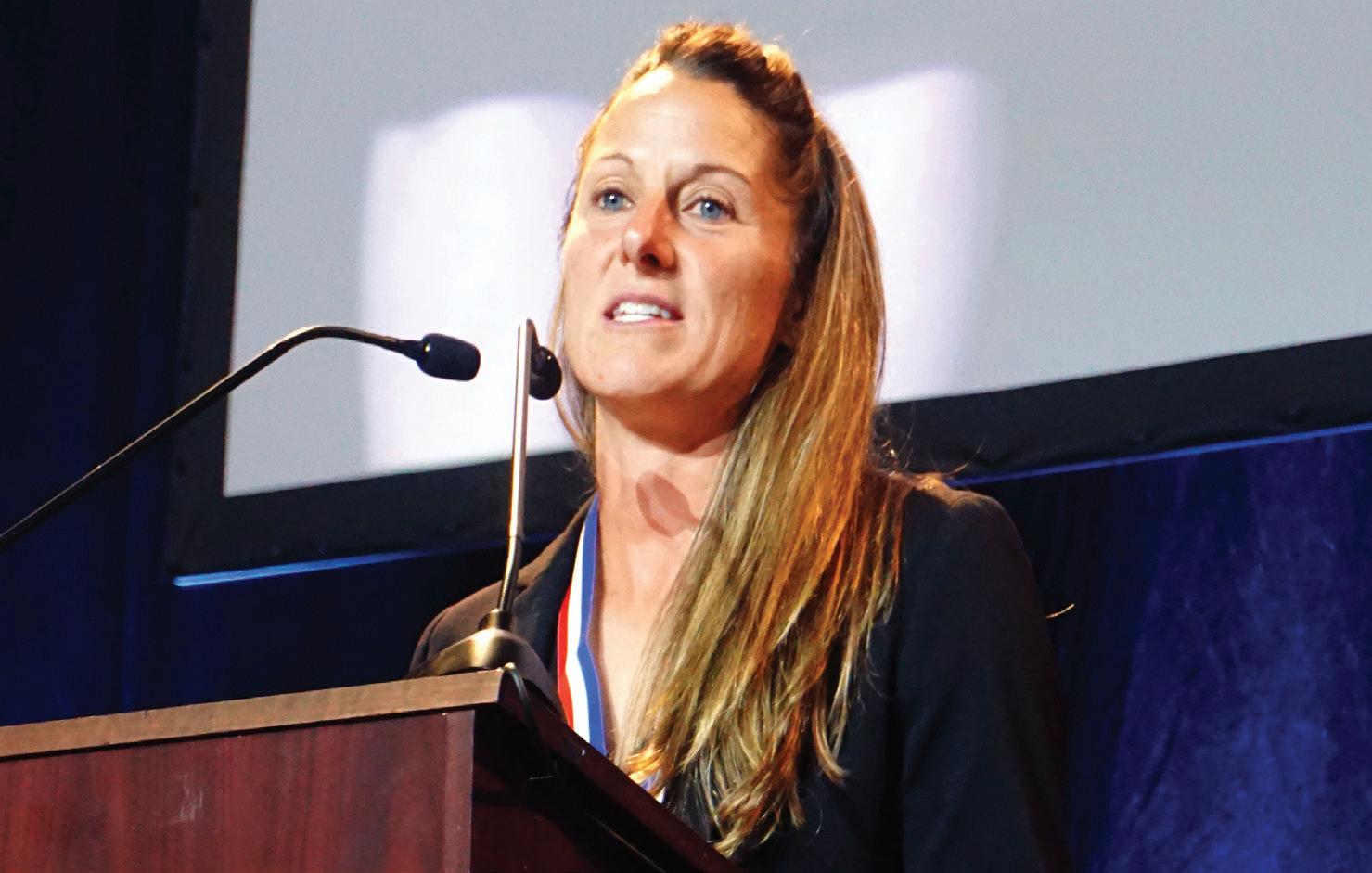
Sitch became an assistant coach for the Chicago Red Stars in 2020. While in Chicago, Sitch joined the University of Chicago men’s soccer team as their head coach, and in her first season, the team went undefeated with 22 wins and one draw. This culminated in Sitch becoming the first woman to win an NCAA Championship as a men’s soccer head coach.
Don Amidei was posthumously inducted into the Hall of Fame on Wednesday. A DePaul basketball, boxing and track and field athlete who graduated in 1949, Amidei coached DePaul’s cross-country and track and field teams from 1962-69. Amidei passed away in 2008 at the age of 82.
The most recognizable inductee of the 2023 class was Illinois Gov. J.B. Pritzker, who received the Lifetime Contribution in Sport Award. This award recognizes a figure that promotes sportsmanship, teamwork, and wellness in the Chicagoland sports community and invests in its growth.
The first inductee speaker of the evening, Pritzker, said he feels responsible for providing more opportunities in sports to Chicago kids who struggle to pursue their dreams due to a lack of resources.
“Since we reenacted the Rebuild Illinois Capital Plan, we’ve revitalized recreation centers and our parks, where it often all begins,” Pritzker said. “I’m so proud of the culture and history of Chicago sports.”
